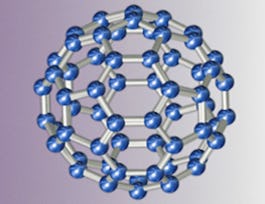A chemistry course to cover selected topics covered in advanced high school chemistry courses, correlating to the standard topics as established by the American Chemical Society.



(1,471 reviews)
Details to know
6 quizzes
See how employees at top companies are mastering in-demand skills

There are 5 modules in this course
The study of chemical kinetics is the study of change over time. It answers questions like: How fast are reactants consumed? How fast are products formed? This unit is dedicated to the exploration of how these questions are answered. We will look at the experimental evidence of how concentration affects these rates. We will also examine what occurs on the molecular level, especially with respect to the motion of molecules, that affects rates of reactions.
What's included
19 videos2 readings1 quiz
This unit introduces the concept of chemical equilibrium and how it applies to many chemical reactions. The quantitative aspects of equilibrium are explored thoroughly through discussions of the law of mass action as well as the relationship between equilibrium constants with respect to concentrations and pressures of substances. Much of the discussion explores how to solve problems to find either the value of the equilibrium constant or the concentrations of substances at equilibrium. ICE (initial-change-equilibrium) tables are introduced as a problem-solving tool and multiple examples of their use are included. From a qualitative standpoint, Le Châtelier’s principle is used to explain how various factors affect the equilibrium constant of a reaction along with the concentrations of all species.
What's included
16 videos1 reading1 quiz
The concept of equilibrium is applied to acid and base solutions. To begin, the idea of weak acids and bases is explored along with the equilibrium constants associated with their ionization in water and how the value of the equilibrium constant is associated with the strength of the acid or base. The autoionization of water is discussed and how temperature affects this process. A variety of problem types are covered including calculations of pH, pOH, [OH-], and [H+] for both strong and weak acids and bases. Aqueous salt solutions are classified as acids and bases and the multi-step ionization of polyprotic acids is discussed. Finally, the concept of Lewis acids and bases is discussed and demonstrated through examples.
What's included
14 videos1 reading1 quiz
This unit continues and expands on the theme of equlibria. You will examine buffers, acid/base titrations and the equilibria of insoluble salts.
What's included
30 videos1 reading1 quiz
The overarching theme of thermodynamics is the prediction of whether a reaction will occur spontaneously under a certain set of conditions. Entropy and Free Energy are defined and utilized for this purpose.
What's included
20 videos1 reading2 quizzes
Instructors


Offered by
Recommended if you're interested in Chemistry

University of Kentucky

Duke University

Duke University

Rice University
Why people choose Coursera for their career




Learner reviews
1,471 reviews
- 5 stars
78.44%
- 4 stars
16.94%
- 3 stars
2.84%
- 2 stars
0.54%
- 1 star
1.22%
Showing 3 of 1471
Reviewed on May 25, 2020
Excellent Course. I sincerely suggest to introduce free courses like these in Computational Chemistry and Analytical Chemistry too that are highly useful to Graduate Chemistry Students
Reviewed on Apr 20, 2020
Excellent teaching practice and wonderful method of learning...
Reviewed on Jan 8, 2022
I cant show enough graatitude to this course to help refresh my knowledge in chemistry

Open new doors with Coursera Plus
Unlimited access to 10,000+ world-class courses, hands-on projects, and job-ready certificate programs - all included in your subscription
Advance your career with an online degree
Earn a degree from world-class universities - 100% online
Join over 3,400 global companies that choose Coursera for Business
Upskill your employees to excel in the digital economy
Frequently asked questions
Access to lectures and assignments depends on your type of enrollment. If you take a course in audit mode, you will be able to see most course materials for free. To access graded assignments and to earn a Certificate, you will need to purchase the Certificate experience, during or after your audit. If you don't see the audit option:
The course may not offer an audit option. You can try a Free Trial instead, or apply for Financial Aid.
The course may offer 'Full Course, No Certificate' instead. This option lets you see all course materials, submit required assessments, and get a final grade. This also means that you will not be able to purchase a Certificate experience.

